<!DOCTYPE html>
<html>
<head>
<meta charset='utf-8'>
<title>Force Layout Example 1</title>
<style>
.node {
fill: #ccc;
stroke: #fff;
stroke-width: 2px;
}
.link {
stroke: #777;
stroke-width: 2px;
}
.line {
stroke: #777;
stroke-width: 2px;
}
</style>
</head>
<body>
<script src='http://d3js.org/d3.v3.min.js'></script>
<script>
var width = 640,
height = 480;
var nodes = [
{ "x": 200, "y": 200 },
{ "x": 500, "y": 300 },
{ "x": 500, "y": 100 },
//{ "x": 650, "y": 100 },
];
//var nodes = [
// { "x": 200, "y": 200 },
// { "x": 500, "y": 300 },
//{ "x": 500, "y": 100 },
//];
//var links = [
// { source: 0, target: 1 },
// { source: 1, target: 2 },
//];
var links = [
{ source: 0, target: 1 },
{ source: 0, target: 2 },
//{ source: 1, target: 3 },
];
var svg = d3.select('body').append('svg')
.attr('width', width)
.attr('height', height);
var force = d3.layout.force()
.size([width, height])
.nodes(nodes)
.links(links);
force.linkDistance(75);
var link = svg.selectAll('.link')
.data(links)
.enter().append('line')
.attr('class', 'link');
var node = svg.selectAll('.node')
.data(nodes)
.enter().append('rect')
.attr('class', 'node');
var subnode = svg.selectAll('.subnode')
.data(nodes)
.enter().append('circle')
.attr('class', 'subnode');
var subnode2 = svg.selectAll('.subnode2')
.data(nodes)
.enter().append('circle')
.attr('class', 'subnode2');
force.on('end', function() {
node.attr("x", function(d) { return d.x; })
.attr("y", function(d) { return d.y; })
.attr("width", 50)
.attr("height", 20);
subnode.attr('r', width/250)
.attr('cx', function(d) { return (d.x); })
.attr('cy', function(d) { return d.y + 10; });
subnode2.attr('r', width/250)
.attr('cx', function(d) { return d.x+50; })
.attr('cy', function(d) { return d.y + 10; });
link.attr('x1', function(d) { return d.source.x; })
.attr('y1', function(d) { return d.source.y+ 10; })
.attr('x2', function(d) { return d.target.x+50; })
.attr('y2', function(d) { return d.target.y+ 10; });
});
force.start();
var line;
function mousedown() {
var m = d3.mouse(this);
//alert(m[0]+"---"+m[1]);
line = svg.append("line")
.attr('x1', m[0])
.attr('y1', m[1])
.attr('x2', m[0])
.attr('y2', m[1]);
svg.on("mousemove", mousemove);
}
function mousemove() {
var m = d3.mouse(this);
line.attr('x2', m[0])
.attr('y2', m[1]);
}
function mouseup() {
svg.on("mousemove", null);
}
</script>
</body>
</html>
The above solution gives below result:
The problem is I dont understand why the graph is drawn reverse and moreover in above code I have commented out some nodes and links if you uncomment them then there is more chaos the whole nodes are drawn in complete random order i.e. increasing more nodes and links create more chaos.
See the JSBIN : http://jsbin.com/yuyolof/edit?html
